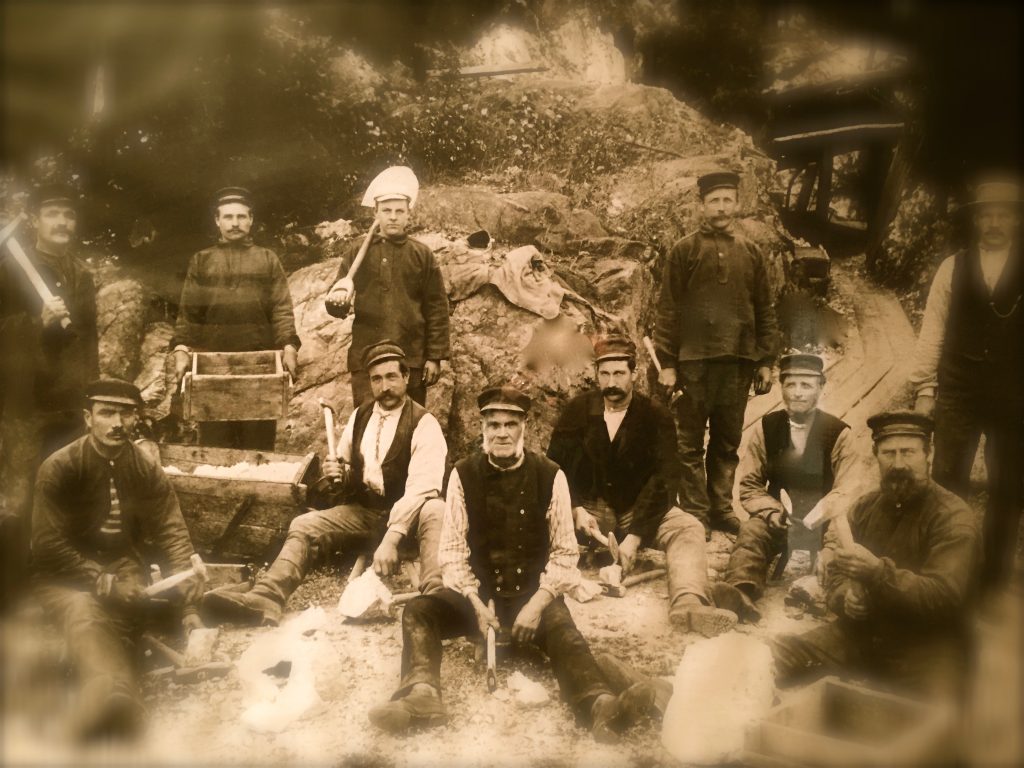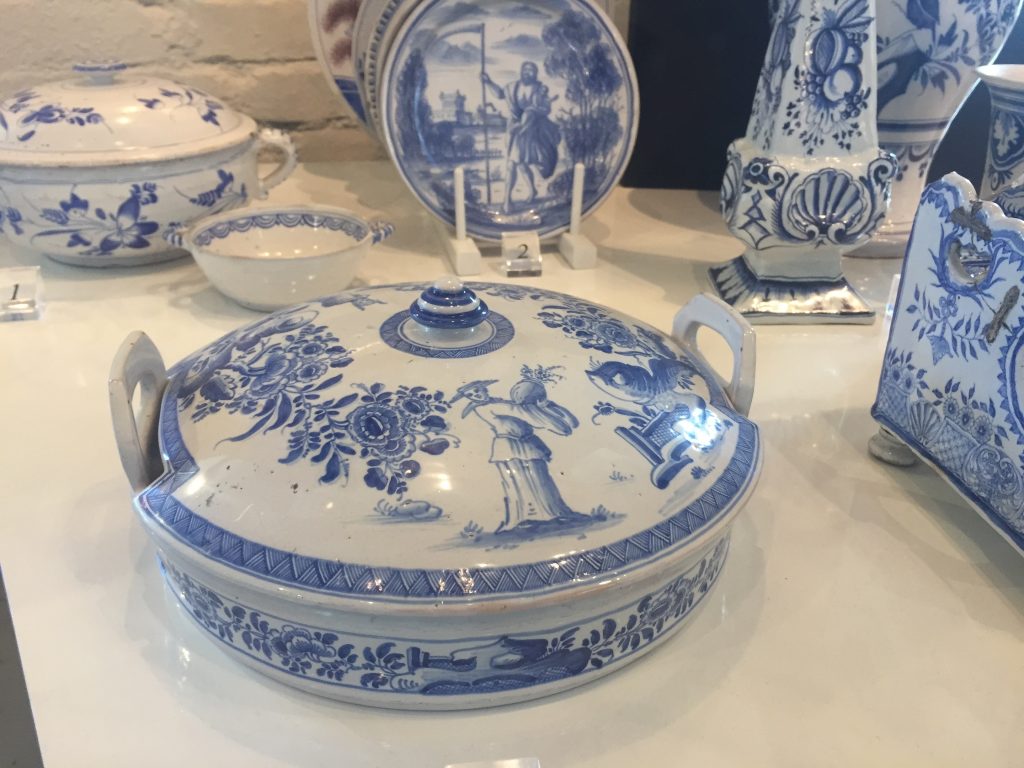
The first years
No one knows for sure when they started mining minerals in Ytterby. Perhaps it was already in the 17th century that the first loads of quartz were transported by boat or sledge to the glass and iron works in Uppland. However, the first reliable evidence of the mine’s existence is dated to the year 1756 when a mineral sample was sent to the Bergskollegiet for analysis.
At the time, Ytterby mine was just one of a number of small archipelago mines. The unique thing about Ytterby was that the rock that was mined here, the pegmatite, was unusually coarsely crystalline, which made it relatively easy to separate and enrich its main constituents, quartz and feldspar. However, it is only around the year 1790 that, in addition to quartz, feldspar (mainly red microlin) is also used. This was then mined here for just over 140 years, a uniquely long period for a feldspar rock!

So what were these minerals used for?
- Quartz was indispensable as a slag former in the smelting of iron mills, but also in the production of glass pulp.
- Feldspar was also necessary in both the glass and ceramic industry as a flux.
But mostly feldspar became known as the most important component of flintware and feldspar porcelain which had begun to be produced in Meissen in the 1720s and which could thus compete both in price and quality with the more expensive Chinese porcelain. Ytterby’s feldspar also had a low iron content, which produced a truly white porcelain.
The mine was bought early on by Rörstrand, who also supplied feldspar to Gustavsberg’s porcelain factory, and therefore there are objects originating from Ytterby in many Swedish households even today!